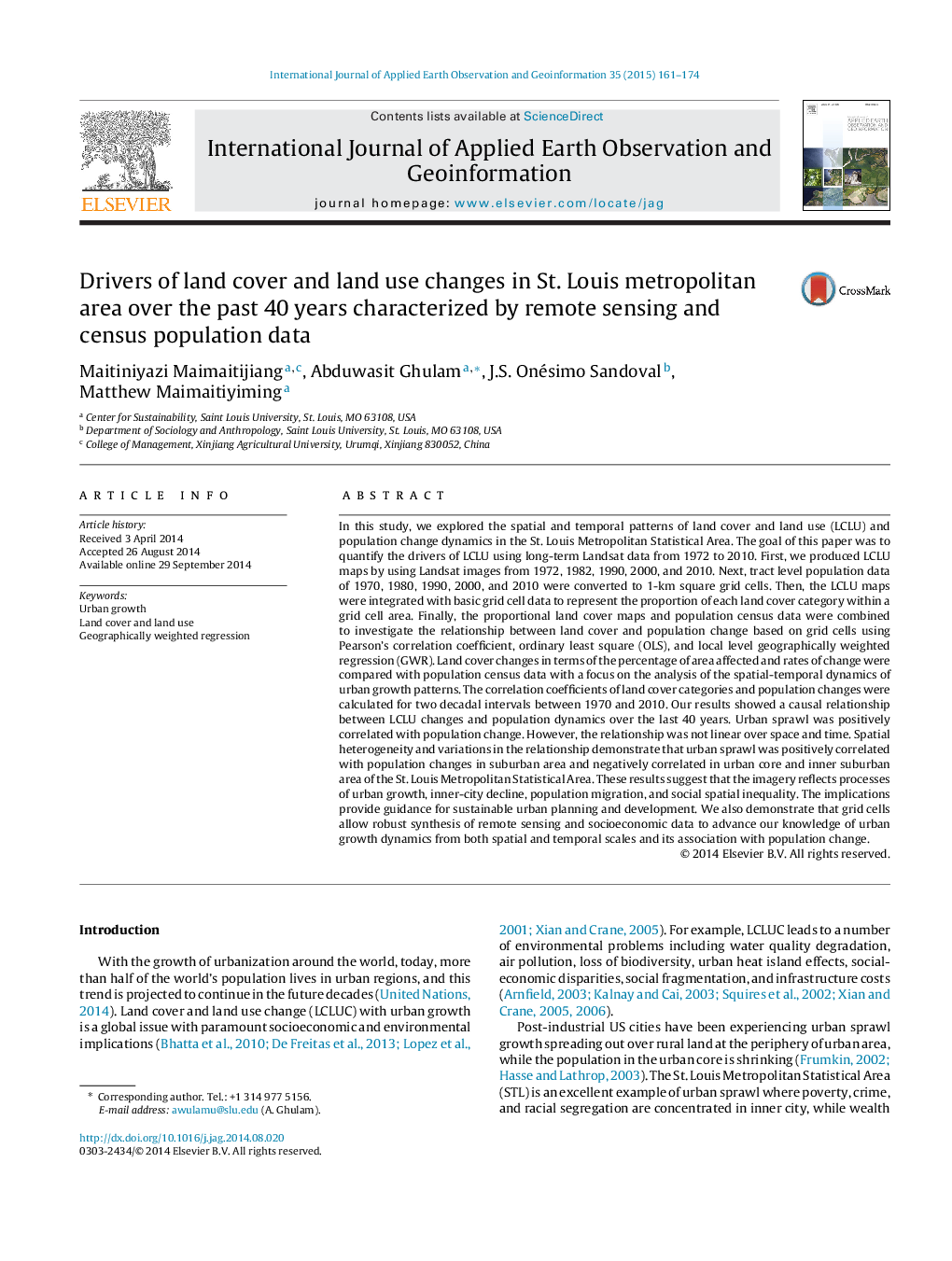| Article ID | Journal | Published Year | Pages | File Type |
|---|---|---|---|---|
| 4464711 | International Journal of Applied Earth Observation and Geoinformation | 2015 | 14 Pages |
•A remote sensing approach to quantify the drivers of land-cover/land-use changes.•An improved grid-cell method that aggregates socioeconomic data to vector grid.•Spatial statistics to identify causal relationship between natural/social factors.
In this study, we explored the spatial and temporal patterns of land cover and land use (LCLU) and population change dynamics in the St. Louis Metropolitan Statistical Area. The goal of this paper was to quantify the drivers of LCLU using long-term Landsat data from 1972 to 2010. First, we produced LCLU maps by using Landsat images from 1972, 1982, 1990, 2000, and 2010. Next, tract level population data of 1970, 1980, 1990, 2000, and 2010 were converted to 1-km square grid cells. Then, the LCLU maps were integrated with basic grid cell data to represent the proportion of each land cover category within a grid cell area. Finally, the proportional land cover maps and population census data were combined to investigate the relationship between land cover and population change based on grid cells using Pearson's correlation coefficient, ordinary least square (OLS), and local level geographically weighted regression (GWR). Land cover changes in terms of the percentage of area affected and rates of change were compared with population census data with a focus on the analysis of the spatial-temporal dynamics of urban growth patterns. The correlation coefficients of land cover categories and population changes were calculated for two decadal intervals between 1970 and 2010. Our results showed a causal relationship between LCLU changes and population dynamics over the last 40 years. Urban sprawl was positively correlated with population change. However, the relationship was not linear over space and time. Spatial heterogeneity and variations in the relationship demonstrate that urban sprawl was positively correlated with population changes in suburban area and negatively correlated in urban core and inner suburban area of the St. Louis Metropolitan Statistical Area. These results suggest that the imagery reflects processes of urban growth, inner-city decline, population migration, and social spatial inequality. The implications provide guidance for sustainable urban planning and development. We also demonstrate that grid cells allow robust synthesis of remote sensing and socioeconomic data to advance our knowledge of urban growth dynamics from both spatial and temporal scales and its association with population change.
